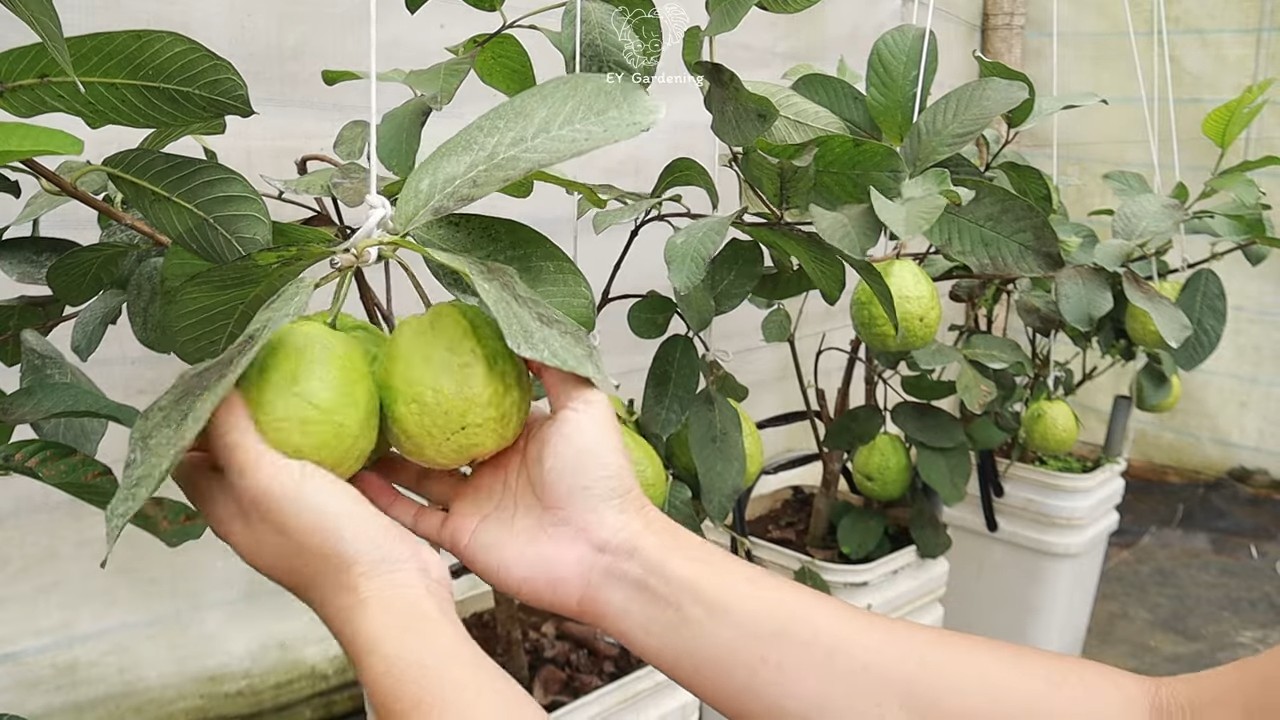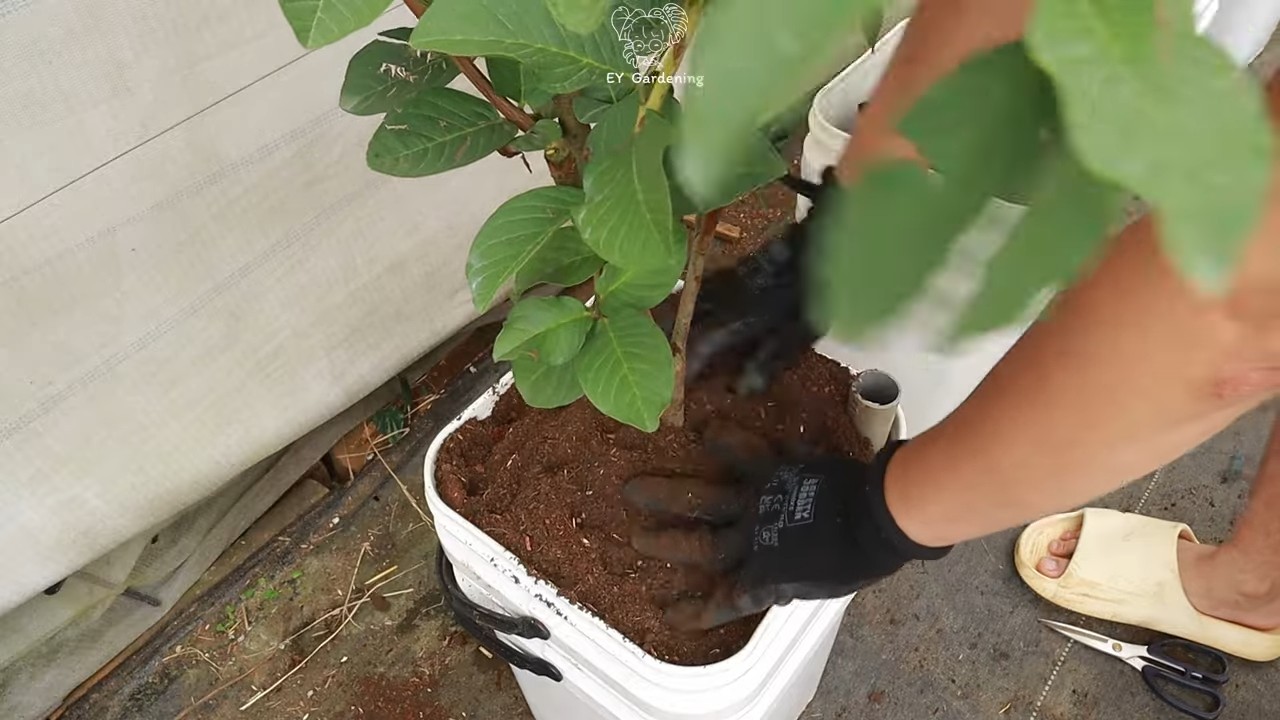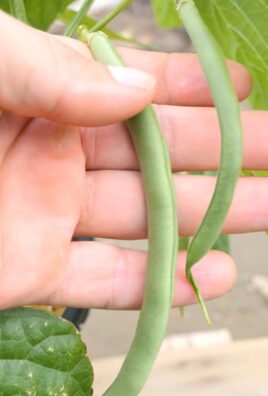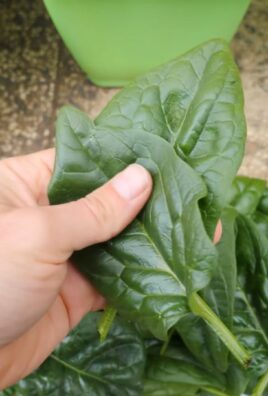Terrace Guava Tree Growing Tips: Imagine stepping onto your terrace and plucking a ripe, juicy guava straight from your own tree! Sounds idyllic, right? Well, it’s more achievable than you might think. For centuries, cultivating fruit trees in limited spaces has been a cherished practice, from the rooftop gardens of ancient Babylon to the balcony orchards of modern-day urban dwellers. This tradition speaks to our innate desire to connect with nature, even amidst the concrete jungle.
But let’s be honest, growing a guava tree on your terrace isn’t always a walk in the park. Many of us dream of fresh, homegrown fruit but are intimidated by the perceived complexity. That’s where these DIY tricks and hacks come in! I’m here to share my tried-and-true methods for successfully growing a thriving guava tree right on your terrace.
Why do you need these terrace guava tree growing tips? Because store-bought guavas simply can’t compare to the flavor and satisfaction of harvesting your own. Plus, growing your own food is a fantastic way to reduce your carbon footprint, enjoy fresh, organic produce, and add a touch of green to your urban oasis. So, let’s dive in and unlock the secrets to a bountiful guava harvest, even with limited space!

Growing Guava Trees in Containers: A Terrace Gardener’s Guide
Hey fellow gardeners! Dreaming of fresh, juicy guavas right on your terrace? You’re in the right place! Growing guava trees in containers is totally achievable, even if you don’t have a sprawling backyard. I’ve been doing it for a few years now, and let me tell you, the reward of plucking your own homegrown guavas is absolutely worth the effort. This guide will walk you through everything you need to know, from choosing the right variety to harvesting your delicious fruit.
Choosing the Right Guava Variety
Not all guava trees are created equal, especially when it comes to container gardening. You’ll want to choose a dwarf or semi-dwarf variety that won’t outgrow its pot too quickly. Here are a few of my favorites:
* ‘Mexican Cream’ Guava: This one is known for its creamy white flesh and sweet flavor. It’s relatively compact and does well in containers.
* ‘Ruby Supreme’ Guava: If you love pink guavas, this is a great choice. It’s also relatively small and produces abundant fruit.
* ‘Tropical White’ Guava: A reliable producer with a mild, sweet flavor. It’s a good option for beginners.
* ‘Red Indian’ Guava: This variety is known for its reddish-pink flesh and strong, sweet flavor. It’s also relatively compact and does well in containers.
Important Considerations:
* Size: Research the mature size of the variety you’re considering. Even dwarf varieties will still need a fairly large container.
* Climate: Guavas thrive in warm climates. Make sure the variety you choose is suitable for your local climate. If you live in a colder area, you might need to bring your tree indoors during the winter.
* Self-Pollination: Most guava varieties are self-pollinating, meaning you only need one tree to get fruit. However, cross-pollination with another variety can sometimes improve fruit production.
Selecting the Right Container and Soil
The right container and soil are crucial for the health and productivity of your guava tree.
* Container Size: Start with a container that’s at least 15-20 gallons in size. As the tree grows, you might need to repot it into a larger container (25-30 gallons or more).
* Material: Choose a container made from a durable material like plastic, terracotta, or wood. Make sure it has drainage holes to prevent waterlogging.
* Drainage: Good drainage is essential for guava trees. Place a layer of gravel or pebbles at the bottom of the container to improve drainage.
* Soil Mix: Use a well-draining potting mix that’s rich in organic matter. A mix of equal parts potting soil, compost, and perlite or vermiculite works well. Avoid using garden soil, as it can become compacted and doesn’t drain well in containers.
Planting Your Guava Tree
Now for the fun part – planting your guava tree!
1. Prepare the Container: Place a layer of gravel or pebbles at the bottom of the container to improve drainage.
2. Add Soil: Fill the container about one-third full with your well-draining potting mix.
3. Remove the Tree from its Nursery Pot: Gently remove the guava tree from its nursery pot. If the roots are pot-bound (tightly circling the pot), gently loosen them with your fingers.
4. Place the Tree in the Container: Position the tree in the center of the container, making sure the top of the root ball is level with the soil surface.
5. Fill with Soil: Fill the remaining space in the container with potting mix, gently firming the soil around the root ball.
6. Water Thoroughly: Water the tree thoroughly until water drains out of the drainage holes.
7. Mulch: Add a layer of mulch around the base of the tree to help retain moisture and suppress weeds. Use organic mulch like wood chips, straw, or shredded leaves.
Caring for Your Container Guava Tree
Proper care is essential for a healthy and productive guava tree.
* Sunlight: Guava trees need at least 6-8 hours of direct sunlight per day. Place your container in a sunny location on your terrace.
* Watering: Water your guava tree regularly, especially during hot, dry weather. Allow the soil to dry out slightly between waterings. Avoid overwatering, as this can lead to root rot. Check the soil moisture by sticking your finger about an inch into the soil. If it feels dry, it’s time to water.
* Fertilizing: Fertilize your guava tree regularly during the growing season (spring and summer). Use a balanced fertilizer (e.g., 10-10-10) or a fertilizer specifically formulated for fruit trees. Follow the instructions on the fertilizer label. I like to use a slow-release fertilizer in the spring and then supplement with liquid fertilizer every few weeks during the summer.
* Pruning: Prune your guava tree regularly to maintain its shape and size, and to encourage fruit production. Prune in late winter or early spring, before new growth begins. Remove any dead, damaged, or crossing branches. You can also prune to shape the tree and control its size.
* Pest and Disease Control: Guava trees can be susceptible to pests and diseases. Inspect your tree regularly for signs of problems. Common pests include aphids, scale, and whiteflies. Common diseases include anthracnose and root rot. Treat any problems promptly with appropriate insecticides or fungicides. I prefer to use organic pest control methods whenever possible, such as insecticidal soap or neem oil.
* Overwintering: If you live in a cold climate, you’ll need to protect your guava tree from frost and freezing temperatures. You can either bring the tree indoors or wrap the container with insulation to protect the roots. If you bring the tree indoors, place it in a sunny location and water it sparingly.
Pollination and Fruit Set
Most guava varieties are self-pollinating, but sometimes they need a little help.
* Hand-Pollination: If you’re not seeing much fruit set, you can try hand-pollinating the flowers. Use a small paintbrush to transfer pollen from one flower to another.
* Encourage Pollinators: Attract pollinators to your terrace by planting flowering plants that attract bees and other beneficial insects.
Harvesting Your Guavas
The moment you’ve been waiting for!
* Ripeness: Guavas are typically ready to harvest when they turn from green to yellow or pink, depending on the variety. They should also be slightly soft to the touch and have a fragrant aroma.
* Harvesting: Gently twist the fruit from the branch. If it doesn’t come off easily, it’s not quite ripe yet.
* Storage: Guavas can be stored at room temperature for a few days or in the refrigerator for up to a week.
Troubleshooting Common Problems
Even with the best care, you might encounter some problems along the way. Here are a few common issues and how to address them:
* Yellowing Leaves: This could be a sign of overwatering, underwatering, nutrient deficiency, or pest infestation. Check the soil moisture, fertilize the tree, and inspect it for pests.
* Leaf Drop: This can be caused by stress, such as sudden changes in temperature or watering. Make sure the tree is getting adequate sunlight and water, and protect it from extreme temperatures.
* Lack of Fruit: This could be due to insufficient sunlight, poor pollination, or nutrient deficiency. Make sure the tree is getting enough sunlight, try hand-pollinating the flowers, and fertilize the tree regularly.
* Pest Infestations: Treat any pest infestations promptly with appropriate insecticides or organic pest control methods.
* Root Rot: This is caused by overwatering and poor drainage. Make sure the container has drainage holes and avoid overwatering. If you suspect root rot, repot the tree in fresh potting mix.
Additional Tips for Success
Here are a few extra tips to help you grow thriving guava trees in containers:
* Rotate the Container: Rotate the container regularly to ensure that all sides of the tree get equal sunlight.
* Protect from Wind: If your terrace is windy, protect the tree from strong winds, which can damage the branches and leaves.
* Monitor Soil pH: Guava trees prefer slightly acidic soil (pH 6.0-6.5). Test the soil pH regularly and adjust it if necessary.
* Repotting: Repot your guava tree every 2-3 years, or when it becomes root-bound. Choose a container that’s slightly larger than the previous one.
* Enjoy the Process! Growing guava trees in containers is a rewarding experience. Don’t be afraid to experiment and learn as you go.
Growing guavas on your terrace is a journey

Conclusion
So, there you have it! Transforming your terrace into a guava haven is not just a dream; it’s an achievable reality with these simple yet effective tips. We’ve walked you through the essential steps, from selecting the right variety and container to mastering the art of pruning and pest control. But why should you embark on this guava-growing adventure?
Firstly, imagine stepping onto your terrace and plucking a sun-ripened, juicy guava, bursting with flavor and vitamins. Forget the bland, store-bought varieties; this is about experiencing the authentic taste of homegrown goodness. Secondly, growing your own guava tree is incredibly rewarding. It’s a chance to connect with nature, learn about plant life cycles, and witness the miracle of growth firsthand. Plus, it’s a fantastic conversation starter!
But the benefits extend beyond personal satisfaction. A guava tree on your terrace contributes to a greener environment, purifies the air, and provides a habitat for beneficial insects. It’s a small step towards a more sustainable lifestyle.
Now, let’s talk about variations. While we’ve focused on general terrace guava tree growing tips, feel free to experiment! Try different guava varieties to discover your favorite flavor profile. Explore organic pest control methods for a truly natural approach. Consider companion planting to enhance growth and deter pests. You could even try espaliering your guava tree against a wall for a unique and space-saving design.
Don’t be afraid to get creative and adapt these tips to your specific terrace conditions and preferences. The key is to observe your tree, learn from its responses, and adjust your care accordingly. Remember, gardening is a journey, not a destination.
We believe that anyone, regardless of their gardening experience, can successfully grow a guava tree on their terrace with a little patience and dedication. The reward of fresh, delicious guavas and a thriving green space is well worth the effort.
So, what are you waiting for? Grab your gardening gloves, choose your favorite guava variety, and start planting! We’re confident that you’ll be amazed by the results. And most importantly, we want to hear about your experience. Share your photos, tips, and challenges with us in the comments below. Let’s create a community of terrace guava growers and inspire others to embrace the joy of homegrown fruit. Let us know if these terrace guava tree growing tips worked for you!
Frequently Asked Questions (FAQs)
What is the best guava variety to grow on a terrace?
The best guava variety for terrace gardening depends on your climate and personal preferences. However, dwarf varieties like ‘Red Indian’ or ‘Allahabad Safeda’ are generally recommended as they are more compact and suitable for container growing. These varieties also tend to fruit earlier and more prolifically. Consider your local climate and choose a variety that is known to thrive in your region. Researching disease resistance is also a good idea.
How big of a container do I need for a guava tree?
A young guava tree can start in a 15-20 gallon container. However, as the tree grows, you’ll need to transplant it into a larger container, ideally one that is at least 24-30 inches in diameter and depth. The larger the container, the more room the roots have to grow, which will result in a healthier and more productive tree. Ensure the container has adequate drainage holes to prevent waterlogging.
How often should I water my guava tree?
Watering frequency depends on several factors, including the weather, the size of the container, and the type of soil. Generally, you should water your guava tree when the top inch of soil feels dry to the touch. During hot, dry weather, you may need to water daily. In cooler, wetter weather, you may only need to water once or twice a week. Avoid overwatering, as this can lead to root rot. A good rule of thumb is to water deeply until water drains out of the drainage holes.
How much sunlight does a guava tree need?
Guava trees thrive in full sun, which means they need at least 6-8 hours of direct sunlight per day. If your terrace doesn’t receive enough sunlight, you may need to supplement with grow lights. Insufficient sunlight can lead to poor fruit production and weak growth. Position your guava tree in the sunniest spot on your terrace.
What kind of fertilizer should I use for my guava tree?
Use a balanced fertilizer with a ratio of 10-10-10 or 14-14-14. Fertilize your guava tree every 2-3 months during the growing season (spring and summer). Follow the instructions on the fertilizer package carefully. You can also supplement with organic fertilizers like compost or well-rotted manure. Avoid over-fertilizing, as this can damage the tree.
How do I prune my guava tree?
Pruning is essential for maintaining the shape and size of your guava tree, as well as promoting fruit production. Prune your tree in late winter or early spring, before new growth begins. Remove any dead, diseased, or crossing branches. Thin out the canopy to allow for better air circulation and sunlight penetration. You can also prune to shape the tree and control its size.
How do I protect my guava tree from pests and diseases?
Regularly inspect your guava tree for signs of pests or diseases. Common pests include aphids, mealybugs, and fruit flies. You can control these pests with insecticidal soap or neem oil. Diseases like anthracnose and guava rust can be treated with fungicides. Good air circulation and proper watering can also help prevent diseases. Consider using organic pest control methods to minimize the use of chemicals.
When will my guava tree start producing fruit?
Guava trees typically start producing fruit within 2-4 years of planting, depending on the variety and growing conditions. Dwarf varieties may fruit earlier. Proper care, including adequate sunlight, watering, and fertilization, will encourage fruit production.
Can I grow a guava tree indoors?
While it’s possible to grow a guava tree indoors, it can be challenging. Guava trees need a lot of sunlight, which can be difficult to provide indoors. You’ll also need to ensure adequate humidity and air circulation. If you choose to grow a guava tree indoors, select a dwarf variety and provide it with the best possible growing conditions.
What do I do if my guava tree is not fruiting?
There are several reasons why your guava tree may not be fruiting. It could be due to insufficient sunlight, improper watering, lack of fertilization, or inadequate pruning. Ensure your tree is receiving at least 6-8 hours of direct sunlight per day, water it regularly, fertilize it every 2-3 months, and prune it properly. You may also need to hand-pollinate the flowers if there are not enough pollinators in your area.




Leave a Comment